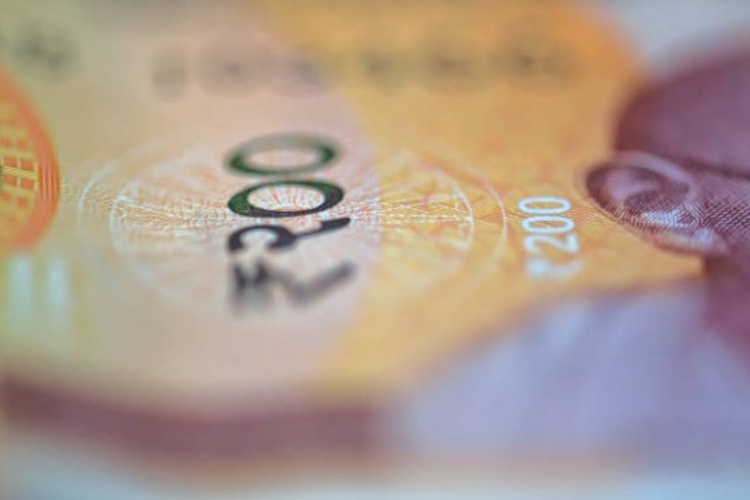
RBI’s rupee defence: The Reserve Bank of India has stepped up its interventions in foreign exchange markets, including the offshore non-deliverable forward market, to curb rupee volatility. At first glance, this may seem prudent: defending stability in turbulent times, especially with Donald Trump’s tariff shocks unsettling global trade. But the cost of this currency management strategy is becoming apparent. Artificially engineering stability through relentless interventions risks weakening market discipline, creating systemic vulnerabilities, and draining valuable reserves. Worse, the intended benefits — boosting exports or shielding against inflation — have been modest at best.
The Indian economy’s resilience requires a more nuanced exchange rate policy, one that avoids excessive interference and instead builds long-term capacity to absorb shocks.
READ | US faces multipolar world as China continues to rise
Weak rupee, weak results for exports
Since January 2024, the rupee has been among the weakest Asian currencies despite a broadly softening dollar. The RBI has resisted natural appreciation pressures, holding the rupee in the 81.5–83.8 band until late 2024 by buying and selling dollars. This was intended to keep exports competitive, much like peers in East Asia once did. Yet the evidence is underwhelming.
Goods exports remained flat through much of 2023–24, growing at just 0.2% year-on-year despite a weaker rupee against the euro and other currencies. Imports, meanwhile, expanded nearly 4%, deepening trade deficits and fuelling imported inflation. A deliberate policy of rupee weakness, far from delivering an export boom, has instead eroded purchasing power at home.
The uncomfortable truth is that India’s export slowdown is driven less by currency valuation than by structural bottlenecks: low productivity in manufacturing, high logistics costs, and persistent tariff uncertainties. No degree of rupee depreciation can substitute for reforms in land, labour, and technology adoption.
RBI’s currency management
What distinguishes the RBI’s recent approach is its aggressive intervention not just in spot and forward markets, but also in the offshore NDF market. Traditionally, the NDF market developed as a way for global investors to hedge rupee exposure outside India’s capital account restrictions. Ironically, the RBI itself began selling dollars in this offshore market by 2024, accumulating short positions of nearly $65 billion.
This blurs the line between defensive stability and outright pegging. Indeed, the IMF has reclassified India’s exchange rate regime from “floating” to “stabilised arrangement”. The result was extraordinary: annual rupee volatility collapsed to 1.8% in 2023–24, the lowest in two decades. Yet such manufactured calm is problematic.
Low volatility lulls private firms into complacency. Believing the RBI will suppress sharp moves, many corporates borrowed more in foreign currencies without hedging. The RBI’s own Financial Stability Report (December 2024) warned that unhedged external commercial borrowings had risen to $65 billion, nearly a third of total ECBs. As the rupee resumed its depreciation post-November 2024, these firms’ balance sheets came under strain.
The costs of fighting the market
There are two dangers in this interventionist path. First, it creates moral hazard. Firms assume that hedging is unnecessary and pile up unhedged liabilities. Second, no central bank can outspend global capital markets indefinitely. India’s reserves of about $640 billion may look comfortable, but the daily turnover in rupee-dollar trading far exceeds that stock. Sustained defence of the rupee can quickly drain reserves, inviting speculative attacks once markets sense the RBI’s resolve is finite.
The Asian financial crisis of 1997 remains a cautionary tale. Thailand and Indonesia depleted reserves to defend pegs until speculative pressure forced devaluation, triggering banking collapses. India is better cushioned today, but the risks of rigid defence remain real. Over time, excessive intervention may actually worsen volatility, as corrections become sharper when the RBI steps back.
Alternatives to over-intervention
India needs a more balanced toolkit. First, the RBI must allow greater two-way flexibility in the rupee. A moderately more volatile exchange rate will encourage prudent hedging and discourage speculative one-way bets.
Second, macroprudential measures can address systemic risks more directly than currency defence. Regulators can impose stricter limits on unhedged foreign borrowings, as East Asian economies did post-1997. Disclosure requirements on firms’ hedging practices could be tightened, ensuring transparency.
Third, the government can do more to stabilise external balances by tackling structural trade deficits. Cutting logistics costs, rationalising tariffs, and boosting agricultural exports will do more for competitiveness than currency tinkering. Similarly, addressing energy mispricing and investing in renewable capacity can cut import dependence on oil, the largest driver of dollar demand.
Finally, capital market reforms are overdue. Liberalising the onshore forward market would reduce the reliance on NDF markets in the first place. Foreign investors and Indian corporates could then hedge transparently onshore, giving the RBI better oversight while deepening domestic markets.
Exchange rate policy in global context
In managing the rupee, the RBI must recognise the broader global environment. Trump’s renewed tariff wars have weakened global growth prospects, constraining export demand. At such times, keeping the rupee artificially weak only raises import costs for households and firms. By contrast, allowing appreciation when the dollar weakens can help contain inflation, anchor interest rates, and boost consumer confidence.
Indeed, other major emerging economies like Brazil and South Africa have allowed their currencies to move freely, riding the wave of global capital flows rather than resisting them. The euro-dollar exchange rate is stable not because of ECB interventions, but because of deep, balanced markets. India should aspire to that model, not a quasi-peg.
Need a forward-looking policy
India stands at an important juncture. Growth is steady, fiscal deficits are contained, and foreign reserves are ample. Yet structural reforms—in land, agriculture, logistics, and R&D—are lagging. Currency policy cannot substitute for these fundamentals.
The RBI should therefore step back from its over-active role in pegging the rupee. Instead, it should focus on inflation targeting, financial stability, and regulatory oversight of external borrowings. The rupee must be allowed to reflect fundamentals, moving both up and down with global tides. Such flexibility will discipline firms to hedge, dissuade speculative bets, and build resilience in India’s financial system.
The lesson from the last two years is clear: engineered calm in currency markets comes at too high a cost. For India to navigate turbulent global waters, it must strengthen its economic hull through reforms, not patch leaks with temporary interventions.
Anil Nair is Founder and Editor, Policy Circle.

